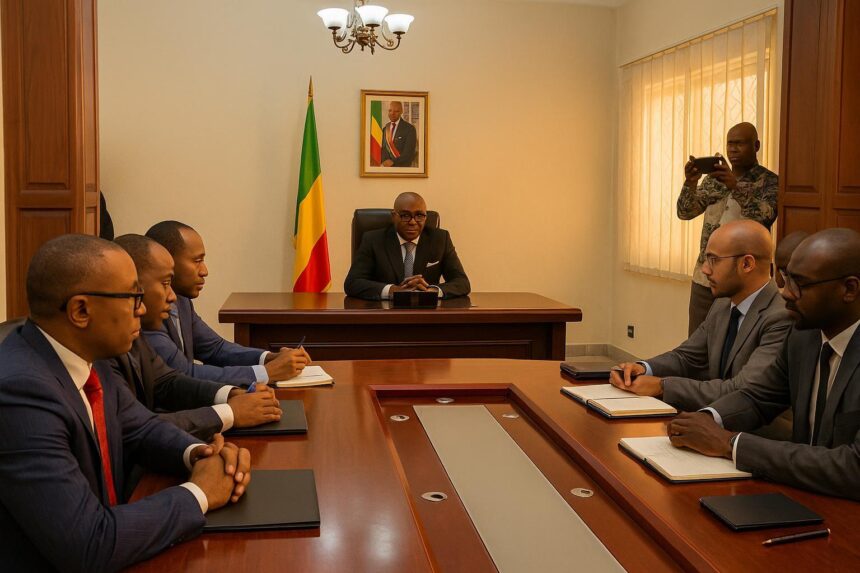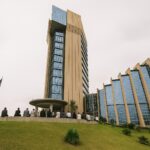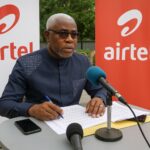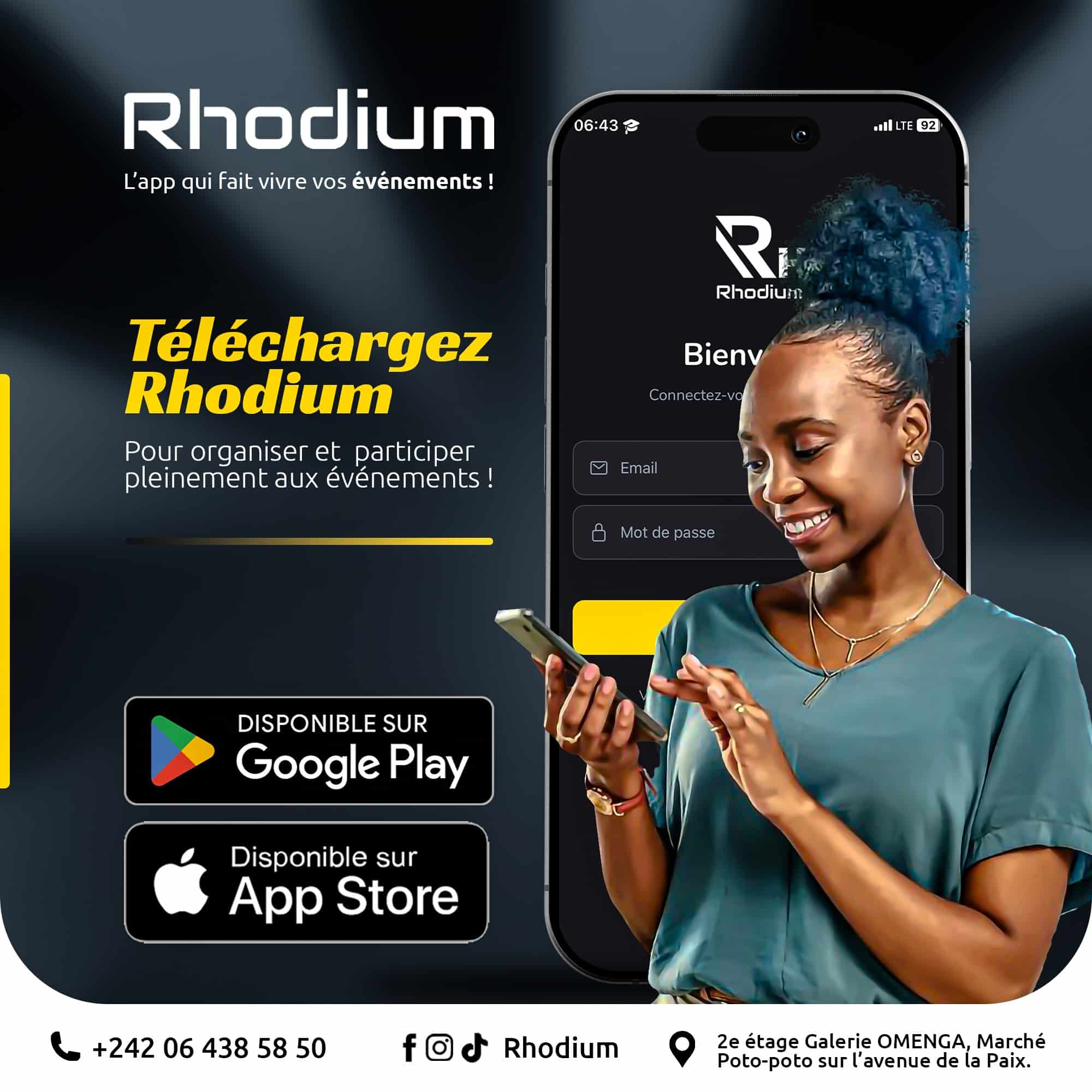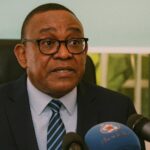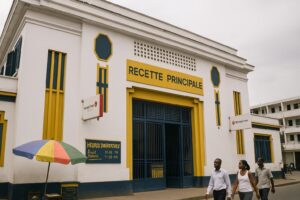High-speed rollout reaches milestone
Congo’s race toward universal connectivity recorded a milestone this week, as officials confirmed that 20 high-speed internet access points are already running in the hinterland under the two-year-old Project for Acceleration of Digital Transformation, known locally as PATN (Minister Léon Juste Ibombo).
The update followed a mid-term review between the Minister of Posts, Telecommunications and Digital Economy, Léon Juste Ibombo, and a World Bank team led by Heri Andrianasy, the main financier of the 100-million-dollar programme designed to shrink the nation’s connectivity gap (World Bank).
Signal already live in market towns
Neither the ministry nor the Bank disclosed the precise villages now benefitting, a safety precaution common in infrastructure roll-outs. Still, field technicians report that several market towns along National Route 2 and Route 1 already feel the difference in download speeds and mobile money reliability.
Traders in Ngabé say a stock order that once took an hour to confirm online is processed “in less than five minutes,” according to phone-shop owner Jeanne Mavoungou, who credits the new hub for cutting transport costs and attracting younger customers eager for social media.
Roadmap toward 76 connected communities
Nationwide, 76 sites have already been built and equipped with antennas, solar panels and secure shelters. The remaining step for 56 of them is the optical-fiber or microwave backhaul that plugs each mast into the national backbone, a stage Ibombo calls “significantly advanced.”
Government engineers target December for full activation, meaning villagers from Sangha to Kouilou could stream lessons, pay fees online and follow national football fixtures in real time before the year closes, a timetable welcomed by local mayors interviewed on state radio.
“Connectivity is no longer a luxury; it is a service as vital as water,” declared Mayor Luc Mampouya of Owando, noting that parents now use WhatsApp groups to monitor school attendance while farmers track weather alerts to protect cassava fields during heavy rains.
Digital 20-30 blueprint advances
Beyond the immediate sites, PATN forms the backbone of Congo’s Digital 20-30 strategy, a roadmap that envisions e-government portals, online land titles, tele-medicine and youth coding hubs. The minister confirmed the text has cleared ministerial validation and awaits cabinet examination.
Once adopted by presidential decree, the strategy would unlock additional multilateral funding, including grants earmarked for cybersecurity training and the local assembly of low-cost tablets, initiatives expected to nurture startups and create jobs for graduates of Brazzaville’s ICT faculties.
Everyday public services in the pipeline
The ministry’s roadmap lists a dozen digital public services scheduled to launch as coverage widens, starting with online birth certificates and medical appointments. A pilot platform already allows Brazzaville residents to download property tax statements, reducing queues at city hall and freeing clerks for other tasks.
Health officials also eye tele-consultation booths connected to teaching hospitals, enabling nurses in remote districts to transmit scans within minutes. “When connectivity arrives, a mother in Impfondo will wait hours less for a specialist’s advice,” says Dr. Pauline Oko, who coordinates the e-health component.
Funding model and energy savings
The 100-million-dollar envelope supporting PATN comes jointly from the World Bank and the European Union, with a small national counterpart. Roughly half is devoted to rural connectivity, while the balance finances data-center upgrades, digital identity trials and training for civil servants.
World Bank official Heri Andrianasy praised the project’s “remarkable cost efficiency” after visiting two pilot towers powered entirely by solar energy. He noted that energy-self-sufficient sites cut operating expenses by nearly 35 percent, a saving that can be redirected to maintenance.
Classrooms, farms and football benefit
In the classroom of Madingou’s Lycée Ngouabi, literature teacher Clarisse Samba projects a poem onto a white wall using an online archive she could never access before. “The kids no longer copy everything by hand; they discuss themes, because the text is a click away,” she smiles.
Farmer Alain Kassa from Bouenza checks market prices for palm oil on his basic smartphone each dawn. “If Pointe-Noire pays better today, I wait for the collector. If not, I sell locally,” he says, crediting the new signal for boosting his bargaining power.
Students at Marien Ngouabi University meanwhile plan to stream Friday’s Red Devils match on the campus lawn, a gathering many see as symbolic: football, music and memes merging under the stars thanks to fiber routed hundreds of kilometres through forest and savannah.
Next steps before national switch-on
Over the coming months, technicians will test each link for 4G readiness, ensure cyber-security protocols meet regional standards and open community feedback desks in local town halls. Officials encourage residents to report downtime so contractors can intervene before the equipment warranty expires.
If the schedule holds, December could see a ceremonial “switch-on day,” mirroring events staged for hydropower dams. For many villages, that ribbon cutting will mark a first step into the digital economy, carrying possibilities that community leaders say “we are only beginning to imagine.”

